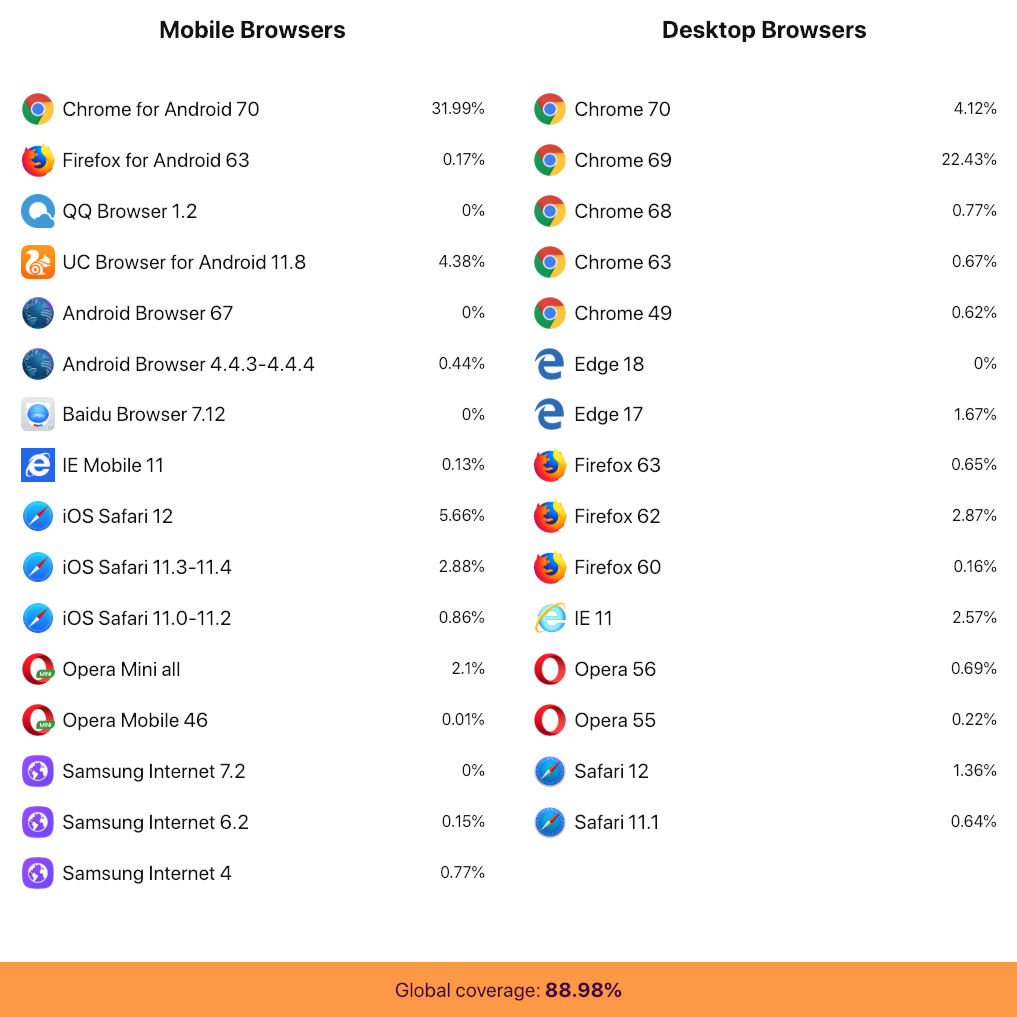angular-material-styles
Version:
The AngularJS Material project is an implementation of Material Design in AngularJS. This project provides a set of reusable, well-tested, and accessible Material Design UI components. AngularJS Material is supported internally at Google by the AngularJS,
216 lines (150 loc) • 9.32 kB
Markdown
# Material Design for AngularJS Apps
[](https://www.npmjs.com/package/angular-material)
[](https://travis-ci.org/angular/material)
[](https://gitter.im/angular/material?utm_source=badge&utm_medium=badge)
[Material Design](https://material.io/archive/guidelines/) is a specification for a
unified system of visual, motion, and interaction design that adapts across different devices. Our
goal is to deliver a lean, lightweight set of AngularJS-native UI elements that implement the
material design specification for use in AngularJS single-page applications (SPAs).
**AngularJS Material** is an implementation of Google's
[Material Design Specification (2014-2017)](https://material.io/archive/guidelines/material-design/)
for [AngularJS](https://angularjs.org) developers.
For an implementation of the [Material Design Specification (2018+)](https://material.io/design/),
please see the [Angular Material](https://github.com/angular/components) project which is built for
[Angular](https://angular.io) developers.

AngularJS Material includes a rich set of reusable, well-tested, and accessible UI components.
Quick Links:
* [API & Demos](#demos)
* [Contributing](#contributing)
* [Building](#building)
* [Installing](#installing)
Please note that using AngularJS Material requires the use of **[AngularJS](https://angularjs.org/)
1.4.x** or higher.
AngularJS Material is targeted for the browser versions defined in the `browserslist` field
of our [package.json](package.json). Below is a screenshot from
[browserl.ist](http://browserl.ist/?q=%3E+0.5%25%2C+last+2+versions%2C+Firefox+ESR%2C+not+ie+%3C%3D+10%2C+not+ie_mob+%3C%3D+10%2C+not+bb+%3C%3D+10%2C+not+op_mob+%3C%3D+12.1)
that provides a visual representation of this configuration:

## <a name="demos"></a> Online Documentation and Demos
<div style="border: 1px solid #ccc">
<img src="https://user-images.githubusercontent.com/3506071/39335179-ef92562e-497f-11e8-9f27-e23dc3a868f9.png" alt="AngularJS Material docs website" style="display:block;">
</div><br>
- Visit [material.angularjs.org](https://material.angularjs.org/) online to review the API, see the
components in action via live demos, and to read our detailed guides which include the layout system,
theming system, typography, and more.
- Or you can build the documentation and demos locally; see
[Build Docs & Demos](https://github.com/angular/material/tree/master/docs/README.md) for details.
## <a name="releasing"></a> Our Release Processes
To preserve stability with applications currently using AngularJS Material, we do not follow semver.
We have three types of releases:
* `major` : major releases will be done in the separate [Angular Material](https://github.com/angular/components) repo.
This type of release will not be used within AngularJS Material.
* `minor`: contain breaking changes in addition to patch release changes.
* `patch`: non-breaking changes (no API, CSS, UX changes that will cause breaks in existing AngularJS Material applications).
##### Patch Releases
The patch builds (1.1.8, 1.1.9, 1.1.10, etc.) are prepared based on commits in the `master` branch;
which contains only non-breaking changes (I.e. bug fixes, new features, API additions, and minimal
non-breaking CSS changes). We are targeting `patch` releases every 2 weeks.
##### Minor Releases
The minor builds (1.1.0, 1.2.0, 1.3.0) can contain breaking changes to CSS, APIs, and UX.
Our formal release of `minor` builds is much less frequent. The release process for `minor` builds is currently
being re-evaluated.
> For the purposes of AngularJS Material, you *could* think of the patch releases as being *minor* changes
and the 'minor' releases as being *major* changes according to semver.
## <a name="contributing"></a> Contributing
Developers interested in contributing should read the following guidelines:
- [Issue Guidelines](.github/CONTRIBUTING.md#submit)
- [Contributing Guidelines](.github/CONTRIBUTING.md)
- [Coding Guidelines](docs/guides/CODING.md)
- [Pull Request Guide](docs/guides/PULL_REQUESTS.md)
- [Software Process](docs/guides/COMMIT_LEVELS.md)
- [Change Log](CHANGELOG.md)
> Please do **not** ask general questions in an issue. Issues are only to report bugs, request
enhancements, or request new features. For general questions and discussions, use the
[AngularJS Material Forum](https://groups.google.com/forum/#!forum/ngmaterial).
It is important to note that for each release, the [ChangeLog](CHANGELOG.md) is a resource that will
itemize all:
- Bug Fixes
- New Features
- Breaking Changes
## <a name="building"></a> Building
Developers can build AngularJS Material using NPM and gulp.
First install or update your local project's **npm** dependencies:
```bash
npm install
```
Then run the **gulp** tasks:
```bash
# To build `angular-material.js/.css` and `Theme` files in the `/dist` directory
gulp build
# To build the AngularJS Material Docs and Demos in `/dist/docs` directory
gulp docs
```
For development, use the `docs:watch` **NPM** script to run in dev mode:
```bash
# To build the AngularJS Material Source, Docs, and Demos in watch mode
npm run docs:watch
```
For more details on how the build process works and additional commands (available for testing and
debugging) developers should read the [Build Guide](docs/guides/BUILD.md).
## <a name="installing"></a> Installing Build (Distribution Files)
#### NPM
For developers not interested in building the AngularJS Material library... use **NPM** to install
and use the AngularJS Material distribution files.
Change to your project's root directory.
```bash
# To get the latest stable version, use Bower from the command line.
npm install angular-material --save
# To get the most recent, latest committed-to-master version use:
npm install http://github.com/angular/bower-material#master --save
```
#### Other Dependency Managers
Visit [Bower-Material](https://github.com/angular/bower-material/blob/master/README.md) for more
details on how to install and use the AngularJS Material distribution files within your own local
project.
This includes instructions for [Bower](https://github.com/angular/bower-material#bower)
and [JSPM](https://github.com/angular/bower-material#jspm).
#### CDN
CDN versions of AngularJS Material are now available.
With the Google CDN, you will not need to download local copies of the distribution files. Instead
simply reference the CDN urls to easily use those remote library files. This is especially useful
when using online tools such as [CodePen](http://codepen.io/), [Plunker](http://plnkr.co/), or
[JSFiddle](http://jsfiddle.net/).
```html
<head>
<!-- AngularJS Material CSS now available via Google CDN; version 1.1.9 used here -->
<link rel="stylesheet" href="https://ajax.googleapis.com/ajax/libs/angular_material/1.1.9/angular-material.min.css">
</head>
<body>
<!-- AngularJS Material Dependencies -->
<script src="https://ajax.googleapis.com/ajax/libs/angularjs/1.7.7/angular.min.js"></script>
<script src="https://ajax.googleapis.com/ajax/libs/angularjs/1.7.7/angular-animate.min.js"></script>
<script src="https://ajax.googleapis.com/ajax/libs/angularjs/1.7.7/angular-aria.min.js"></script>
<script src="https://ajax.googleapis.com/ajax/libs/angularjs/1.7.7/angular-messages.min.js"></script>
<!-- AngularJS Material Javascript now available via Google CDN; version 1.1.10 used here -->
<script src="https://ajax.googleapis.com/ajax/libs/angular_material/1.1.10/angular-material.min.js"></script>
</body>
```
Developers seeking the latest, most-current build versions can use [GitCDN.xyz](https://gitcdn.xyz/) to
pull directly from the distribution GitHub
[Bower-Material](https://github.com/angular/bower-material) repository:
```html
<head>
<!-- AngularJS Material CSS using GitCDN to load directly from `bower-material/master` -->
<link rel="stylesheet" href="https://gitcdn.xyz/cdn/angular/bower-material/master/angular-material.css">
</head>
<body>
<!-- AngularJS Material Dependencies -->
<script src="https://ajax.googleapis.com/ajax/libs/angularjs/1.7.7/angular.js"></script>
<script src="https://ajax.googleapis.com/ajax/libs/angularjs/1.7.7/angular-animate.js"></script>
<script src="https://ajax.googleapis.com/ajax/libs/angularjs/1.7.7/angular-aria.js"></script>
<script src="https://ajax.googleapis.com/ajax/libs/angularjs/1.7.7/angular-messages.min.js"></script>
<!-- AngularJS Material Javascript using GitCDN to load directly from `bower-material/master` -->
<script src="https://gitcdn.xyz/cdn/angular/bower-material/master/angular-material.js"></script>
</body>
```
Once you have all the necessary assets installed, add `ngMaterial` and `ngMessages` as dependencies for your app:
```javascript
angular.module('myApp', ['ngMaterial', 'ngMessages']);
```